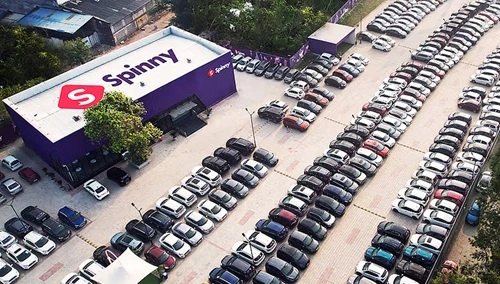In India right now, buying furniture pieces online has become a normal thing, which back just a decade ago, no one could have imagined that this would become the new norm. But that’s how it is for now. And sure enough, Urban Ladder is a BIG name in this space, which has been keeping up the good work for more than a decade now. But it is not just the furniture sales that make them money, or their business model doesn’t just include furniture sales; there is more to it. So, for that, we’re here with this in-depth post to discuss the Urban Ladder business model and how they make money.

| Company/Brand | Urban Ladder Home Décor Solutions Limited |
| Establishment year | 2012 |
| Headquarters | Bengaluru, Karnataka, India |
| Founder | Founders: Ashish Goel, Rajiv Srivatsa |
| Industry | Furniture and home décor retail (omnichannel/D2C) |
| Number of employees | 880 |
| Net worth | ₹61.73 crore total equity as of March 31, 2024 |
| Total revenue in 2024 | ₹152.10 crore revenue from operations (FY2023-24) |
What Is Urban Ladder?
Urban Ladder is a furniture and home décor brand from India that was established back in 2012. When it comes to furniture, well, Urban Ladder did something different, actually, like they went ahead with their idea or concept of offering design-focused, utilitarian pieces and customer-centric service. That’s what made them big. It is not just their online platform where you can buy furniture pieces from them, nah, there are actual physical stores where you can have a look around before making the final purchase decision.
Ownership Overview
Well, talking about the early days, Urban Ladder was established by Ashish Goel and Rajiv Srivatsa in 2012. Sure, from the very start, the business was initially an online-only brand, but it later transitioned to an omnichannel brand by introducing actual physical stores in the metro cities. A big moment for them came in 2020 when Reliance Retail purchased a 96% stake in Urban Ladder. After the acquisition, the company is a subsidiary of Reliance Retail Ventures Limited, and that is pretty much how it is now enjoying the benefits of extended distribution, funding, and retail presence.
How Urban Ladder Makes Money
It’s not just the furniture sales that Urban Ladder makes money from; there are a few other things you should know, like:
- Furniture and Home Decor Sales: The brand generates cash by providing products like sofas, beds, tables, and storage units. This section, named “Sale of products”, has reached a revenue of ₹17.90 crore in FY2023-24.
- Services: This is their largest revenue source by far. How exactly? Well, the services are interior design help, delivery, assembly, and installation. As the main source of the company’s revenue, this business line, marked as “Income from services,” yielded ₹161.09 crore in the financial year 2023-24.
- Marketplace Sales: Urban Ladder has also listed some of its products on third-party marketplaces to get more exposure. It is a way to generate additional revenue that does not have to depend on their own website or stores entirely.
- B2B and Bulk Projects: Additionally, their business receives order requests from the business sector or property developers, who, in turn, supply offices or residential projects with goods in large quantities. There is a team exclusively responsible for overseeing this channel in order to ensure continuous order flow.
Pricing and Margins
It may sound a bit surprising to some of you that the furniture sales are what make up the highest contributor to the total profits or revenue. In actuality, it is the interior design services, as well as installation, as service offerings that generate the highest margins of the company. How? Well, it’s simple actually, these services are paid add-ons that help increase the order value.
Customer Journey and Sales Channels
This is how the customer journey looks in most cases: customers start off by shopping online, looking through products, checking out the details, and making a list of the potential items. Subsequently, they usually go to physical stores to have a look at the products and get the necessary assistance from the staff before they make up their minds. The services, such as delivery and installation, which come after the buying, are great helpers in terms of convenience, thus upgrading the whole experience and making the customers happy.
Operations and Cost Structure
The major operational costs include:
- Inventory procurement
- Salaries for designers and in-store staff
- Store rentals
- Logistics and installation costs
- Technology and backend maintenance
Despite that, the company has managed to keep the situation with returns, delivery issues, and damages under control by simplifying processes and increasing the share of high-margin services, which is very significant for a category like furniture, where fulfillment can easily become complex, you know? And that too in a matter of no time.
Financial Overview (FY2023-24)
- Operating Revenue: ₹152.10 crore
- Total Income: ₹154.60 crore
- Net Worth (as of March 31, 2024): ₹61.73 crore
At the end, well, we’d just say that these numbers reflect a stable and improving business backed by a stronger balance sheet. Can you see just that?



